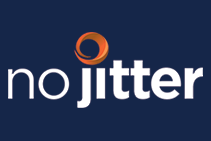
The allure of the cloud has been, for many, the hope that the cloud will be the equivalent of the "Easy button" that will resolve challenges such as scalability, complexity, and resource constraints. But as the cloud marketplace matures, it's apparent that not all clouds are created equal. In fact, the term "cloud" seems to have so many definitions that it has become an imprecise catch-all phrase, open to interpretation and marketing spin.
During his keynote at Enterprise Connect 2016, Rowan Trollope, senior VP and GM of Cisco's Collaboration Technology Group, referred to Cisco Spark as having a "true cloud" architecture (view video recording here). Others have talked about "Cloud 2.0." But what makes that different from Cloud 1.0? And what is that, anyway? More importantly, when an organization is making a decision about which technology to use, what questions should be asked to highlight the differences among offers so that everyone understands the capabilities they are actually getting?
I went searching for answers. I looked at three companies within the industry who have a history in premises solutions. However, they have also more recently introduced cloud services that are a complete departure from the legacy architecture: ShoreTel (Connect), Interactive Intelligence (PureCloud) and Cisco (Spark). All three companies have introduced cloud services that have significant overlap with previously existing on-prem products. All three essentially started over, rather than adding on to existing software. Obviously, that's a lot of work. What made them decide it was necessary?
I spoke with executives at all three companies, and during our conversations, I found several common themes:
"The old code wouldn't work," said Dan Rood, evangelist for Interactive Intelligence's PureCloud Platform. "Well, some would work, but the way it was built was the problem. The old code was written to work with the data layer instead of calling APIs (as PureCloud does)."
"Spark was purpose built, by design, as a mobile and cloud paradigm," Chris Wiborg, director of Collaboration Portfolio Marketing at Cisco, told me.
All described their new offer as a platform. They are all multi-tenant by design. "Everyone gets the same service," ShoreTel CMO Mark Roberts said. . "A single tenant can be customized, but it's more expensive and difficult to manage."
That's where APIs (Application Program Interface) come in. APIs are one of the most common ways technology companies integrate with each other. Common integrations include Salesforce, Microsoft Dynamics, and other CRM systems, as well as emergency notification systems, property management systems, and many other applications. Access to APIs allows organizations to customize a cloud service to meet their individual needs. As Cisco's Wiborg stated, "The platform is designed to work with APIs."
Increased speed of development is another common element. "There is a continual evolution of the service," ShoreTel's Roberts said. "Think of Google or Salesforce -- what version are you on? No one has a clue." Glenn Nethercutt, an architect for Interactive Intelligence's PureCloud, remarked, "In three years of development, PureCloud will surpass capabilities of CIC (the ININ premises system) that has had 20+ years of development."
In these cloud services, software is updated constantly -- not every two weeks, but constantly. "Customers like incremental features that are learnable and immediately consumable with direct ROI," said Randy Carter, senior marketing content architect with Interactive Intelligence. "They don't have a huge learning curve that they would have with a new software release on a premises system. They have small changes that are manageable."
But if an organization has customized its service by connecting to other applications using APIs, isn't there a risk that when new features are deployed, something will break? "APIs are not changed (with new updates)", Interactive's Nethercutt told me. "We may give access to more data than previously, but the old capabilities are kept the same."
"Software virtualized in a data center is not a cloud," according to Mark Roberts. "Even if it's multi- tenant, there's no elasticity built in. It's a matter of philosophy and approach. A true cloud is able to go small or large without any architectural changes. An architecture that is developed as a cloud has no concept of how many users it will support. In contrast, a premises system is based on 'X' number of users".
"If there are problems with scalability, it has to do with architecture," Interactive's Rood added.
"Yes!" they all agreed. "Some 'cloud' solutions are not based on a true active/active architecture with automatic failover," explained ShoreTel's Roberts. "In some cases, failover is manual."
I asked all these cloud experts what questions an organization should be asking to uncover what type of cloud services they are being offered. Their recommendations are what follow:
"SCTC Perspectives" is written by members of the Society of Communications Technology Consultants, an international organization of independent information and communications technology professionals serving clients in all business sectors and government worldwide.
Tags:
Articles You Might Like








